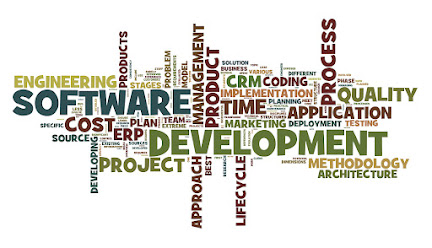From Reactive to Proactive: The New Approach to SDLC Security
Why Teams Need a Security Perspective in SDLC?
Customer trust, customer happiness, sensitive customer data, and getting a bigger share of the market all depend on security. Any kind of compromise hurts the business and the brand value of the goods. Enterprises are setting aside separate funds for product security to avoid getting into trouble.
As the market becomes more prone to security vulnerabilities and security breaches, software engineering and delivery teams are thinking about application security and its significance. Fixing issues with security patches demonstrates the low security controls and may hurt organizations with additional money and lack of customer trust. There is a need for engineering teams to build a secure software product before it goes to the market.
Today we'll talk about how we changed our SDLC methodology journey across software designing, development and deployment phases by keeping security controls in the forefront to minimize the security vulnerabilities.
What is Security Vulnerability & How to Assess Them?
In simple terms, vulnerability is an open faucet with water leaking that a threat agent can use to get what they want. Security vulnerability assessment is essential while developing any software product. During the software creation process, every developer must understand the impact of security vulnerabilities for business, what and how to avoid them. Before developing any software application, a software engineering team must ask the following five key queries:
1. Is private information encrypted in the app?
2. Are conversations and transactions secure?
3. Is the software product set up properly with permissions and authentication?
4. Is there any possibility of injection attacks on my software product?
5. Does the application handle sessions and cookies in a safe way so that attacks can't happen?
The Cost of Developer Negligence
A high-quality software product requires an allocated budget for its end-to-end software development process lifecycle, from research to GTM. Aside from these primary criteria, several other factors influence the SDLC.
Organizations adhere to security controls and best practices prior to software release. This scanning stage evaluates the probability of application breaches.
This allows the engineering teams to amend the problems. We can, however, shorten the time it takes to rework security vulnerabilities by training engineers. Instead of relying solely on scan results, it can be improved with secure coding best practices. A developer's safe perspective will save significant time and money when applying security fixes and will benefit the firm.
Are You Securing Your SDLC?
Across any Software Development Life Cycle (SDLC methodology), a software product has to be in accordance with organizational regulations. With efficient SDLC methodologies, organizations can increase cost-effectiveness and save approximately 30% costs in SDLC.
Software Requirement Gathering
Business analysts must work on finishing Application Security Requirements while assessing, analyzing, and concluding the customer's business requirements. These are some examples:
· Choosing the production environments for application usage.
· Defining the scope of the application, business scenarios, and authentication and access situations.
· Understanding and implementing the regulatory norms of the appropriate government.
· Taking into account PII storage laws and regulations such as GDPR legislation.
Software Design
For any software designing process in the SDLC methodology, the role of an application architect is extremely important. A software design becomes the foundation of any product or application. The architect must develop the application while keeping security and commercial objectives in mind. Engineering teams must consider several factors when creating the application, including:
· Examining the holistic design and architecture of the software product from a security standpoint.
· Before completing frameworks and technologies, assess them for known weaknesses.
· Examining and evaluating sensitive information for weaknesses.
· Creating and ensuring top-notch security policies for coding and criteria that must be followed when creating.
Software Development
Software development is a critical phase that comes after the software designing process in the SDLC methodology. This is the implementation phase since modules are implemented according to the design. Engineering teams need concrete training on secure coding methodologies.
While writing and evaluating the code during the software development process, informed developers will have a secure perspective. The following views should be considered throughout the development phase:
· Educating developers on security issues.
· Coding in accordance with the organization's or architects' Security Guidelines.
· Perform code assessment for holistic security controls.
· Perform Static Code Analysis to identify any vulnerabilities early on.
Software Testing
Software testing is the post-development quality assurance step in the software development process. Quality analysts ensure the quality of every software application through effective penetration testing practices. Engineering teams should be responsible for testing modules from a security standpoint while testing the application:
· Complete feature testing for security controls and requirements developed throughout the software requirement analysis in the SDLC methodology.
· Conducting thorough testing to identify security vulnerabilities, secure authentication, authorization bypass, and so on.
· Using Browser-Specific Developer Tools to investigate web application security testing, different password rules.
Software Deployment
Once the program has been stabilized and evaluated for software quality, it needs to be deployed in various production environments. Staging, Production, and so on are examples of these. This phase, like the others in the SDLC methodology, must focus on vulnerabilities and security controls:
· Perform application Dynamic Scan risk analysis such as HP Fortify or Veracode DAST.
· Make certain that the infrastructure and server configurations are thoroughly safe.
Xoriant + Customer Security Story
As we discuss process modifications, we must provide instances of successful business outcomes. A renowned organization successfully launched a new product with innovative features. Following the release, the organization wanted to analyze the product for any security vulnerabilities and flaws. Post scanning, the company had to take efforts in the complete SDLC methodology across re-designing the software, redevelopment of the software, and ensure re-testing for a security fix.
With security enhancements, the firm’s customer loyalty and brand value increased. As a result, the organization made implementation of security best practices in SDLC methodology a mandatory practice. The lowered cost overall SDLC costs.
What’s Next?
By including security perspectives into every SDLC methodology, we can ensure that architects and developers' perspectives on product security change. Resources need to achieve rapid organizational growth by cost and time savings, deploy their products in the market faster, with higher brand value, a more secure solution, and fewer possibilities of being attacked by threat agents.
From legacy systems to cloud-native and mobile apps, Xoriant combines 30+ years of security knowledge with cutting-edge new tools and technologies to secure your assets. We make certain that your company and your digital products are free of any security vulnerabilities.
Maximize security in your software development process and stay protected




Comments
Post a Comment